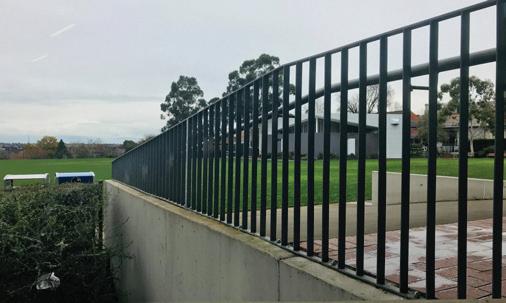
2 minute read
A Fair Go and a Fighting Chance
Andrew Lim, Year 11
What sort of a world are we? Do we believe in a go for everyone – in a world that creates opportunities for all who work hard and play fair? When we turn on the news, we discuss big issues of finance: banks bailed out, corruption laid bare, and inverted yield curves. But we must not forget, amidst the jargon, the little stories – of fathers and sons, mothers and daughters, lives lived, and lives lost. We must remember the millions of people our financial system fails every day. Because their lives are under attack and they deserve better.
They deserve the strong regulatory agencies that can keep irresponsible banks in check. They deserve to know that their government is working in their interest and not that of bank lobbyists. They deserve a fair go and a fighting chance.
Let me start with a number. $120 billion. That’s how much was stripped from Aussie taxpayers and given to the big banks to bail them out in 2008. No strings attached. No questions asked. No new rules or regulations to stop reckless behaviour. Just some free money. And what’s worse, the policy was put in stone. Today, the riskiest business on the planet – banking – is the safest business to bet on. Why? Because banks around the world can act irresponsibly while the good times roll on, safe in the knowledge that, when the waters get choppy, they can take money from the taxpayer and keep on going.
Once upon a time, the banks were taken to task after any recession. ‘You can have the bailout money,’ we said, ‘but we’ll need to see change.’ Boards were overhauled, reviews pursued, and major shake-ups initiated. But not anymore. Today, as we bail them out unconditionally, we give them a licence to do whatever they want. And it impacts the ordinary Australians.
Take David Harris. A 30-year old roofer. A problem gambler. In April 2016, he was working overtime – day in, day out – to pay off his $27,000 debt. And he went to the bank. He
David Clark - Year 12
begged them to stop increasing his credit limits. He told them of his addiction and his catastrophic debt. But they simply loaned him more and more money, and then refused to let him try and pay off his debts and cancel the card. His plans, his ambitions, his hopes – sidelined to make a small proportion of a tiny profit increase.
And he wasn’t the only one. Millions of Australians’ dreams suffered under irresponsible lending practices, with banks who sold loans to people in debt, who forged documents to make people’s credit history look better, who used bogus indicators to target our most vulnerable, rather than protecting them.
Is it any wonder that we now see ourselves teeter-tottering towards a recession of our own?
The fact is, there’s precedent for it. Looking beyond these antipodean shores, let’s take a look at the good ol’ US of A. In 1792, less than a decade after the nation’s founding, Treasury Secretary Alexander Hamilton had to bail out the country’s banks from a credit freeze. There starts an American cycle ringing like a gong through history – boom then bust. Boom then bust. Every 10 to 15 years, a catastrophic failure that targets ordinary people. It reaches its crescendo in 1929: The Great Depression.










